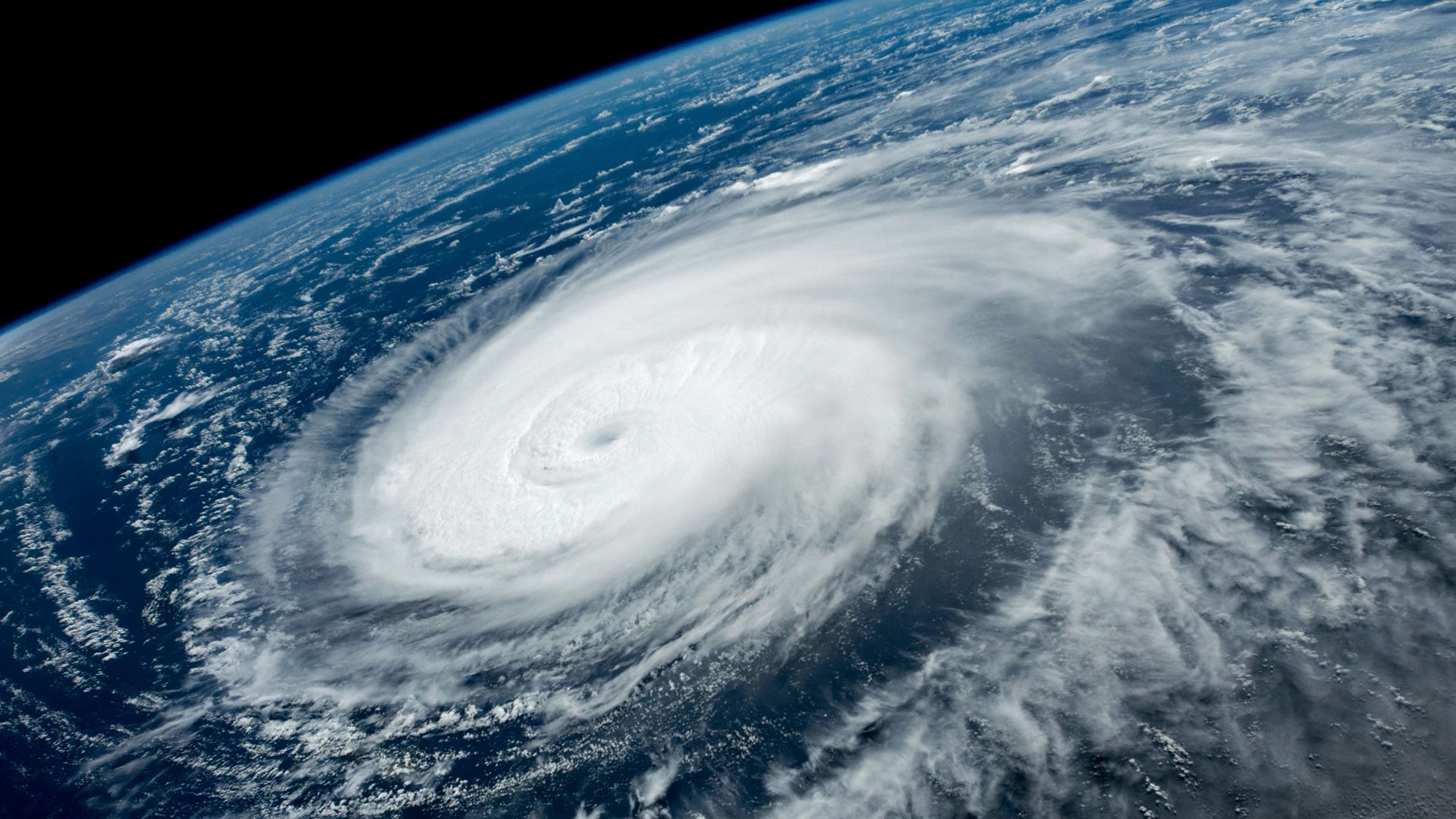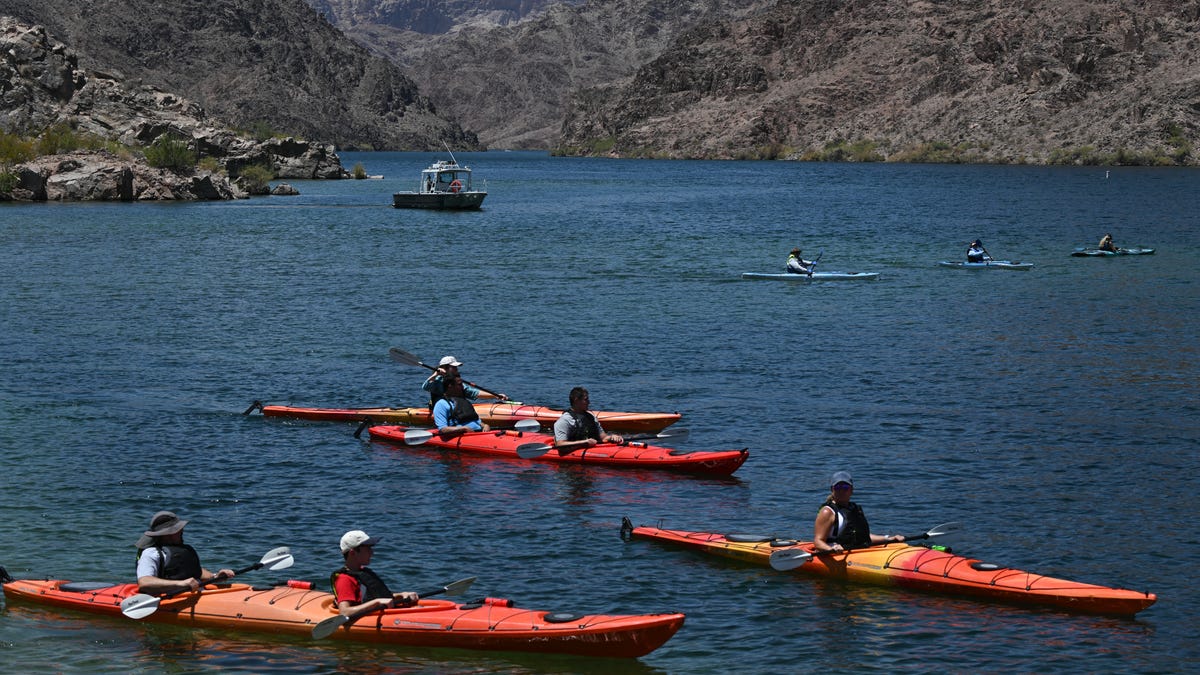A detailed expense budget for NOAA outlines plans to reduce spending and cut climate and atmospheric research.

NOAA, FEMA cuts will impact hurricane season, experts warn
The Trump administration’s budget cuts at NOAA and FEMA will have an adverse affect on how the U.S. responds to hurricanes, experts warn.
A new budget document from the National Oceanic and Atmospheric Administration spells out in detail what many scientists and researchers both in and out of the federal government have feared since a White House budget proposal in the spring.
If approved by Congress, it would reduce NOAA’s expenses by 30%, roughly $2 billion, and the 12,000-member staff by 18%.
It would eliminate the agency’s Office of Oceanic and Atmospheric Research and zero out funding for its climate, weather and ocean laboratories and cooperative institutes, which work to improve forecasting and better understand weather patterns and the ocean. That includes an office that helps support the pioneering carbon dioxide monitoring on Hawaii’s Mauna Loa, and another that supports the National Sea Grant program and its aquaculture research. Sea Grant is a 50-year-old federal university partnership that assists coastal communities and local economies with understanding, conserving and using coastal resources.
It’s clear the administration intends to have NOAA “completely abandon climate science,” Alan Gerard, who retired earlier this year from the National Severe Storms Laboratory, one of the labs proposed for elimination, wrote in a June 30 Substack post.
NOAA’s focus on the warming climate, and the increase in extreme weather events such as heavy rainfall and longer droughts, has been criticized by the Trump administration and its supporters.
Reaction to the release of the detailed budget swept social media on June 30 and “brought back into the spotlight what the administration wants to do to NOAA research,” said James Franklin, retired branch chief of the hurricane forecast specialists at the National Hurricane Center.
Members of the American Meteorological Society and others are worried the actions taken at NOAA are risking the nation’s safety and economy.
Franklin and other NOAA supporters are waiting to see what Congress does with the proposals from President Donald Trump and the agency.
Gerard wrote that it is “jarring to read such hugely damaging cuts to our science and public safety programs spelled out in such antiseptic, matter-of-fact language.”
He doesn’t have high hopes for Congress’s ability to reverse the proposed cuts. The administration’s budget indicates “that they believe that they can use budget rescission and impoundment to help achieve their goals regardless of Congressional budget action,” he wrote.
The budget states NOAA will continue to support “high priority ocean and weather research programs” within the National Weather Service and the National Ocean Service.
At the weather service, NOAA said it plans to streamline field operations and “deepen” partnerships with the commercial weather enterprise while continuing to produce operational forecasts and warnings to the emergency management community and public as they “prepare for and respond to increasingly frequent severe weather and water events.”
Sticking closely to a mission stated by the White House early on, the budget reductions focus heavily on climate-related research, regardless of whether it’s research on the overall climate or climate change. The White House directives have mirrored recommendations of the Heritage Foundation’s Project 2025, which lambasted NOAA for being “one of the main drivers of the climate change alarm industry,” and suggested privatization of some NOAA functions.
The proposed budget states it would no longer support the National Integrated Heat Health Information System, a federal website on heat and heat-related illnesses that brings together information from NOAA and more than a dozen other departments and agencies.
Closing research labs
If approved by Congress, the budget would close such laboratories as the 52-year-old Atlantic Oceanographic & Meteorological Laboratory in Miami, a key partner of the National Hurricane Center.
It would also close the Global Monitoring Laboratory, with offices in Mauna Loa, Hawaii, Colorado; Alaska; American Samoa and the South Pole, and eliminate funding for a nationwide network of soil moisture sensors.
Mauna Loa is home to the Mauna Loa Observatory, the world’s longest-running station that monitors carbon dioxide in the atmosphere. It’s not clear what the withdrawal of NOAA staff and offices would mean for the observatory, where monitoring takes place in collaboration with the Scripps Institution of Oceanography.
“The observatory needs staff and the staff are based in Hilo,” Ralph Keeling, who directs the institution’s CO2 Program, told USA TODAY earlier in the year after the Department of Governmental Efficiency announced plans to shutter a NOAA office in Hilo.
The budget also proposes closing the Great Lakes Environmental Research Laboratory, with two offices in Michigan, as well as the Pacific Marine Environmental Laboratory in Seattle.
The closure of the labs could halt all forward progress on improving hurricane forecasts, Franklin said. “The kinds of tools that tend to come out of the NOAA labs are things that allow the forecasters to analyze the storms better.”
Aspects of the hurricane center’s operations developed within the agency’s laboratories and cooperative institutes include the Hurricane Analysis and Forecasting System, NOAA’s “state-of-the-art, high-resolution coupled modeling system,” as well as leading statistical models for forecasting intensity and rapid intensification of hurricanes, Franklin said. Others provided techniques to estimate a storm’s intensity using satellite imagery and tools dropped from hurricane hunter planes to document the vertical structure of hurricane eye walls.
Only a small fraction of NOAA Research would remain and be transferred to the National Weather Service, including portions of the weather, tornado and technology research.
The budget does not state whether the weather service intends to keep all of its 122 weather forecast offices open, but it does say it would continue to translate key products into Spanish, Samoan, Chinese, Vietnamese, and French.
(This story has been updated to correct a typo.)
Dinah Voyles Pulver, a national correspondent for USA TODAY, covers climate change, weather, the environment and other news. Reach her at dpulver@usatoday.com or @dinahvp on Bluesky or X or dinahvp.77 on Signal.








